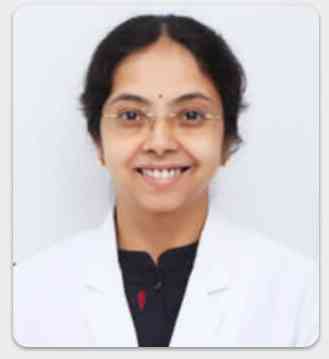Overproduction of tears and blocked ducts major cause of eye-watering: Dr. Aparna Ayyagari

Hyderabad, October 4, 2021: Tears to a certain level are vital for the eyes as it aids in keeping the eyes lubricated and removing any foreign bodies and dust particles. Dr. Aparna Ayyagari, Consultant Ophthalmologist, Dr. Agarwals Eye Hospital Hyderabad, explains the science behind the watering of the eyes. In medicine, an overflow of tears onto the face, other than caused by normal crying is referred to as Epiphora. It is a clinical sign or condition that constitutes insufficient tear film drainage from the eyes, in that tears will drain down the face rather than through the nasolacrimal system.
Dr. Aparna Ayyagari says, “The main causes of watering are overproduction of tears and blocked ducts. In babies, the most common cause is blocked ducts. Some are born with underdeveloped ducts, which can clear up in a few weeks when the duct develops fully. Lacrimal massage is suggested for the babies to open the ducts. There is also a risk of infection if the tear duct is narrowed or blocked, resulting in a stagnant tear in the tear sac. While in adults and older kids, the most common cause is overproduction of tears.”
In case a foreign body enters the body, first, the eye should be washed with clean water at room temperature, and the patient should not rub the eye. In case the sensation of the foreign body persists, the patient should consult an ophthalmologist. To remove it, artificial tears for lubrication, antibiotic drops if indicated are started. Whereas, in case of chemical injury, initially the eye should be washed with copious amounts of clean water, and the patient must consult an ophthalmologist immediately.
Dr. Aparna Ayyagari shares some of the common problems related to eye-watering are as follows:
Allergic Conjunctivitis is caused by an allergen that causes an overreaction by the body's immune system. It results in watering, itching, redness, and difficulty looking at the light. Patients must avoid the allergen, refrain from rubbing eyes, and avoid wearing contact lens.
While in the case of infective conjunctivitis, symptoms like redness, pain, difficulty to look at light, stickiness, discharge can be present. The infection can usually be resolved within 1 week, even without treatment.
Dry Eyes: A person can suffer from dry eyes due to various reasons like the body not making enough tears, tear getting dried up too fast, not having the correct balance of water and mucus, windy conditions or air conditioning directing straight at the eye, ageing, and some medical conditions (thyroid eye disease, chronic sinus infections, rheumatoid arthritis, Sjogren’s syndrome, SLE etc). So, the eye reacts by producing more tears.
Different Eyelid problems causing watering can be in turning of eyelid margin or outward turning of lid margins or incomplete closure of eyelid etc.
Scartch in Cornea can be due to dust, sand, insect, contact lens, the patient should see an ophthalmologist immediately to prevent further infection.
Blepharitis, it is due to blockage and infection of glands near the eyelid margin. Patients may suffer from watering, redness, itching, crusting over the lashes.
A stye, associated with blepharitis is a red swollen lump that forms along the edge of the eyelid, close to the lashes (external), or inside or under the lid (internal), due to inflammation or infection of oil glands.
A chalazion is the term given to stye in case it becomes chronic, without pain. If it is not resolved with warm compresses, and medical management surgery can be planned, in which by making a small incision content are scooped out.
Dr. Aparna Ayyagari adds, “For symptomatic relief, the patient has to reduce the screen time, use of glasses with anti-reflective coating, a blue light filter can be used, and 20-20-20 rule should be practised, where every 20 minutes spent using a screen, the patient must try to look away at 20 feet distance for a total of 20 seconds and, warm compresses also help. Whereas, according to the level of dryness, artificial tears and gels should be added. In case of severe dryness, new modalities like IRPL (Intense Regulated Pulse Light Therapy) can be tried to open up the blocked glands.”
She concludes, “Any Injury or obstruction to the tear drainage pathway can cause severe watering, for which surgical management is necessary. Also, any tumour either benign or cancerous, like lacrimal gland tumours, or tumours of paranasal sinuses can cause severe dryness, which will always require surgical intervention.”


 cityairnews
cityairnews 








